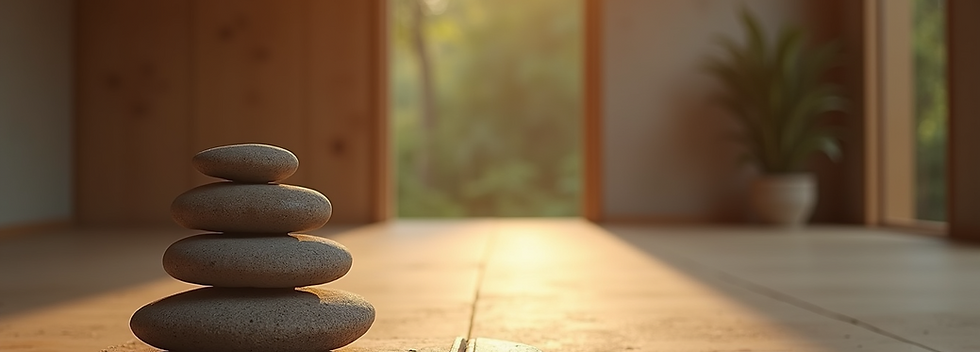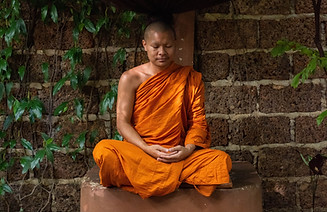
MeditatioN
Unravel the Power of Anulom Vilom
The Geniuses' Secret to Wellness
Anulom
Vilom
Meditation
Exercise

In the fast-paced modern world, finding a moment of calm can often seem like a luxury. But what if we told you there's an ancient yogic technique that not only offers a slice of serenity but also comes with a multitude of health benefits? Welcome to the world of Anulom Vilom, a practice that's as fascinating as it sounds. Interestingly, this simple yet powerful technique has also found its way into the wellness routines of several celebrities.
What is Anulom Vilom?
Anulom Vilom, often referred to as Alternate Nostril Breathing, is a pranayama or breathing technique used in Yoga. It is more than just inhaling and exhaling; it's about finding a rhythm, a balance, and tuning into the natural ebb and flow of your own body. It involves taking a deep breath in through one nostril, holding the breath momentarily, and then exhaling through the other nostril. The process is then reversed and repeated.
Unveiling the Benefits:
Anulom Vilom isn't just about calming your mind; it serves a myriad of health benefits that are proven to enhance your overall wellness. Some of the key benefits include:
1. Improved Respiratory Health: Regular practice of Anulom Vilom helps to clear blocked nasal passages. This, in turn, assists in improving respiratory health and can even be beneficial for conditions like Asthma.
2. Enhanced Concentration: By bringing your focus to your breath, this practice helps in improving your concentration levels, making you more attentive and alert.
3. Reduced Stress and Anxiety: This yogic technique works wonders in reducing stress and anxiety by calming your mind, promoting relaxation, and improving mental health.
4. Better Sleep: By aiding in the release of tension, Anulom Vilom can also contribute to better sleep, helping you fight insomnia and sleep disorders.
There are numerous celebrities, athletes, and public figures around the world who openly advocate for yoga as a part of their fitness and wellness routine.
Celebrities:
1. Jennifer Aniston: The Friends star has often attributed her toned physique and mental wellbeing to her dedicated yoga routine.
2. Madonna: The pop legend has been practicing yoga for years, including the physically demanding Ashtanga style.
3. Gwyneth Paltrow: Known for her wellness brand Goop, Paltrow has often mentioned yoga as a key part of her health regimen.
Athletes:
1. LeBron James, the NBA superstar is known to incorporate yoga into his workout routine to improve his flexibility and focus.
2. Ryan Giggs: The Manchester United legend credited yoga with extending his football career, using it to improve flexibility and prevent injury.
3. Serena Williams: The tennis champion has used yoga for both physical flexibility and mental focus.
Public Figures:
1. Michelle Obama: The former First Lady has spoken about using yoga as part of her exercise routine.
2. Sheryl Sandberg: Facebook COO and author of "Lean In" has spoken about yoga and meditation as helpful in dealing with stress and grief.
Anulom Vilom, with its simplicity and remarkable benefits, truly stands out as an integral part of the yogic world. Remember, just like any other form of exercise or wellness routine, consistency is vital in Anulom Vilom as well.
So why not take a leaf out of your genius life coach's book and add Anulom Vilom to your daily routine? After all, a journey towards a healthier, balanced you is just a few breaths away!
Harness the Power of Solitude
Meditation and Its Geniuses Advocates
Solitude
Meditation
Exercise

In the buzzing world we inhabit, solitude often gets overlooked, misunderstood, or at times, even feared. However, when embraced positively, solitude can become a powerful tool for personal growth and well-being. One such practice that beautifully marries the power of solitude and mindfulness is Solitude Meditation. This introspective journey has not just been recognized by wellness enthusiasts but has also found advocates in the world of geniuses.
What is Solitude Meditation?
Solitude meditation is a practice of individual meditation, where you focus on mindfulness and self-awareness. By detaching yourself from the external world, you connect with your inner self, observing thoughts and emotions without judgment. It's not about emptying your mind but about understanding and accepting your mental landscape just the way it is.
The Remarkable Benefits:
The magic of solitude meditation lies not just in its simplicity but also in the abundance of benefits it offers. Some of the key benefits include:
1. Enhanced Focus and Concentration: Regular practice can significantly improve your attention span, making you more productive in every aspect of life.
2. Stress Management: It is an effective way to reduce stress and anxiety by bringing you closer to your inner peace.
3. Emotional Health: Regular practice can lead to increased positivity, reduced feelings of loneliness, and improved emotional stability.
4. Improved Self-awareness: Solitude meditation allows you to understand your thought patterns better, helping in personal growth and self-improvement.
Practicing solitude meditation is a powerful way to connect deeply with your own thoughts, feelings, and the present moment. Below, you'll find a simple guided exercise to help you get started.
Step-by-Step Solitude Meditation Exercise
1. Find a quiet, comfortable space: Choose a space where you won't be disturbed. This could be a room in your home, a quiet spot in a park, or even a secluded beach. Ensure that the space is comfortable and promotes feelings of calmness.
2. Set a timer: Decide on how long you'd like to meditate. If you're a beginner, you might want to start with just five to ten minutes. Set a timer so you don't have to keep checking the time.
3. Sit comfortably: Find a comfortable position. You could sit cross-legged, kneel, or even sit in a chair. Keep your back straight, your chin slightly tucked in, and your hands resting on your knees or in your lap.
4. Close your eyes and take deep breaths: Start by taking a few deep breaths. Inhale deeply through your nose, hold for a moment, and then exhale through your mouth.
5. Focus on your breath: Now, let your breath return to its natural rhythm. Pay attention to the sensation of the breath entering and leaving your nostrils. Notice the rise and fall of your chest or belly with each breath.
6. Observe your thoughts: As you focus on your breath, thoughts will arise. Don't try to stop or judge them. Simply observe them as they come and go, always returning your focus to your breath when you notice your mind has wandered.
7. Embrace the solitude: As you sit alone with your thoughts, embrace the solitude. Remember that this time is for you and you alone. This is a safe space for you to simply be, without judgment or expectation.
8. End the session: When your timer goes off, slowly bring your awareness back to your surroundings. Wiggle your fingers and toes, gently open your eyes, and stretch your body.
Practicing solitude meditation can help you develop a deeper understanding of yourself and your thought patterns, enhance your focus and concentration, reduce stress, and promote overall well-being.
Solitude meditation, with its plethora of benefits, provides an avenue for you to connect deeply with yourself. This wonderful practice, invites us to embrace the solitude, explore the quiet, and truly listen to our thoughts. Remember, this journey is personal, and there's no right or wrong way to practice. The goal is to stay consistent, and soon you will notice a positive shift in your life.
